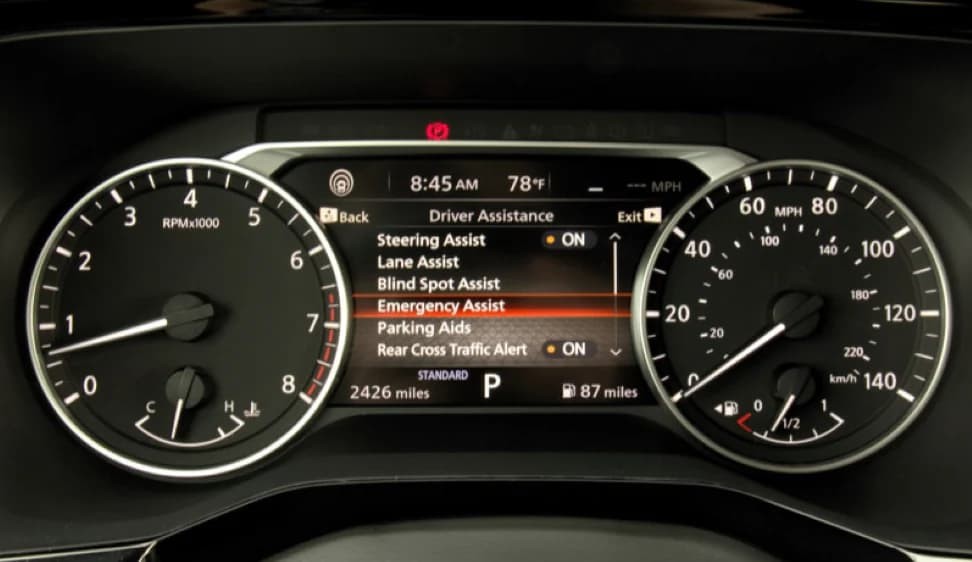When you’re in the market for a used car, the odometer reading is often one of the first things you check. Mileage is a significant factor, but understanding what constitutes high mileage and how it impacts a car’s value and longevity is crucial. As your trusted experts at cars.edu.vn, we’re here to guide you through everything you need to know about used car mileage, helping you make an informed decision.
Decoding Used Car Mileage: What’s Good, What’s High, and What’s Too Much?
Mileage on a used car is essentially a measure of how much the vehicle has been driven. It’s a key indicator of wear and tear, but it’s not the only one. Let’s break down what different mileage ranges typically mean for a used vehicle.
What’s Typically Considered Good Mileage for a Used Car?
Industry experts generally agree that an average car is driven around 10,000 to 12,000 miles per year. Therefore, to assess whether a used car has good mileage, you can compare its odometer reading to its age.
For example, if you’re considering a 3-year-old used car, a “good mileage” range would be approximately between 30,000 and 36,000 miles. To calculate this, simply multiply the car’s age by the average annual mileage range. Cars with mileage falling within or below this range are often seen as having “good mileage.”
Vehicles with lower annual mileage might suggest less wear and tear on critical components like the engine, transmission, and suspension. This can make them more attractive options. However, remember that mileage is just one piece of the puzzle. Other factors, such as the car’s make, model, maintenance history, and the conditions it was driven in, are equally important.
Defining High Mileage: When Does Mileage Become a Concern?
Traditionally, the benchmark of 100,000 miles has been widely considered the threshold for “high mileage.” In the past, reaching this milestone often signaled that a vehicle was nearing the end of its usable life. However, automotive engineering has advanced significantly, and modern vehicles are built to last much longer.
While 100,000 miles is still a point where some cars might begin to require more frequent maintenance and potentially more expensive repairs, it’s no longer the definitive cutoff it once was. Many well-maintained modern cars, particularly models from brands like Toyota and Honda, are known for their longevity and can reliably exceed 200,000 miles and even more.
It’s also important to consider the type of driving a car has endured. A car that has accumulated high mileage primarily through highway driving might experience less wear and tear compared to a car with lower mileage predominantly driven in stop-and-go city traffic. Highway miles are generally considered “easier” on a vehicle than city miles.
Why Does Used Car Mileage Matter So Much?
Mileage serves as a practical indicator of a car’s accumulated wear and tear. Every mile driven contributes to the overall stress on the vehicle’s components. However, it’s crucial to understand that mileage is not the only determinant of a used car’s condition and remaining lifespan.
The way a car has been driven and, most importantly, how well it has been maintained plays a pivotal role. For instance, a relatively young 3-year-old car with 140,000 miles accumulated primarily from consistent highway driving might be in better mechanical condition than a 10-year-old car with only 60,000 miles that has spent its life navigating demanding stop-and-go city traffic.
Regular maintenance, including timely oil changes, fluid checks, tire rotations, and adherence to the manufacturer’s recommended service schedule, can significantly extend the life of a vehicle, regardless of mileage.
So, How Many Miles on a Used Car Is Too Much?
There’s no universal answer to the question of “how many miles is too much?” It’s not simply about reaching a specific number on the odometer. A meticulously maintained car with 150,000 miles on the clock, especially if it’s from a brand renowned for its durability and reliability, could still have considerable life left.
However, if a used car has a questionable or incomplete maintenance history, or if it has had multiple previous owners (which can sometimes indicate less consistent care), high mileage could be a stronger warning sign of potential future mechanical issues.
When you’re considering a used car with higher mileage, it becomes even more important to take proactive steps to assess its condition. Investing in a pre-purchase inspection by a qualified mechanic is a wise decision. A professional inspection can uncover hidden problems and provide a clearer picture of the car’s mechanical health beyond just the mileage reading.
Understanding Average Mileage for Used Cars on the Market
As we mentioned earlier, the average annual mileage for a vehicle is around 12,000 miles. Therefore, when you are evaluating a 10-year-old used vehicle, you might expect it to have approximately 120,000 miles.
If a vehicle has significantly higher mileage than this for its age, it could be considered high mileage. Conversely, extremely low mileage for an older car isn’t always a guaranteed advantage. Cars with ultra-low mileage might have sat unused for extended periods. This inactivity can lead to its own set of problems, such as seals and gaskets drying out, engine issues due to lack of lubrication, or brake problems from corrosion.
The Impact of Mileage on Used Car Prices
Mileage has a direct and substantial impact on the pricing of used cars. Generally, a used vehicle with lower mileage will command a higher price compared to an otherwise identical vehicle with higher mileage. This is because lower mileage is often associated with less wear and tear and a longer expected lifespan.
For example, when comparing two cars of the same make, model, year, and condition, the one with 30,000 miles will typically be priced higher than the one with 90,000 miles. However, it’s important to remember that high-mileage cars can still represent excellent value, especially if they have been diligently maintained and are priced accordingly.
Mileage Thresholds to Be Cautious Of
While modern cars are engineered for greater longevity, vehicles approaching or exceeding mileage figures like 150,000 to 200,000 miles may become more prone to needing significant and potentially costly repairs. This is not a hard rule, but rather a general guideline.
Diesel engines are a notable exception. Known for their robust construction and durability, diesel engines often outlast gasoline engines, sometimes by a considerable margin. Therefore, higher mileage on a [diesel vehicle](Used Cars for Sale) might be less of a concern than on a gasoline-powered car. Additionally, brands like Honda and Toyota have consistently demonstrated exceptional reliability and longevity across their model lineups, making higher mileage less of a deterrent for these makes.
Certified Pre-Owned (CPO) Vehicles: A Mileage-Conscious Option
If you are concerned about mileage but desire the added assurance of a thoroughly vetted and reliable used vehicle, exploring Certified Pre-Owned (CPO) cars is an excellent strategy. CPO vehicles are typically newer models, often just a few years old, with lower mileage restrictions.
Furthermore, to earn the CPO designation, these vehicles must pass a rigorous multi-point inspection conducted by factory-trained technicians. They also come with manufacturer-backed extended warranties, providing greater peace of mind and mitigating some of the risks associated with buying a used car, especially concerning potential repairs down the road.
The Bottom Line: Mileage Is Important, But Not the Only Factor
When determining how many miles are too many for a used car, remember there is no definitive, universally applicable number. While 200,000 miles is often considered a general upper limit even for well-maintained vehicles, mileage alone should not be the sole deciding factor.
A used car’s maintenance history, the number of previous owners, its overall condition (both mechanical and cosmetic), and the results of a pre-purchase inspection are all equally critical pieces of information.
Whether you are considering a used car with 50,000 miles or 150,000 miles, thorough research, careful evaluation, and a professional inspection are the keys to making a confident and informed decision. By focusing on the overall health and history of the vehicle, rather than just fixating on the odometer reading, you significantly increase your chances of purchasing a reliable used car that meets your needs and budget.
For expert advice and a wide selection of quality used vehicles, visit your local AutoNation USA location today. Our knowledgeable team is ready to answer all your questions about used car mileage and help you find the perfect car for you.

